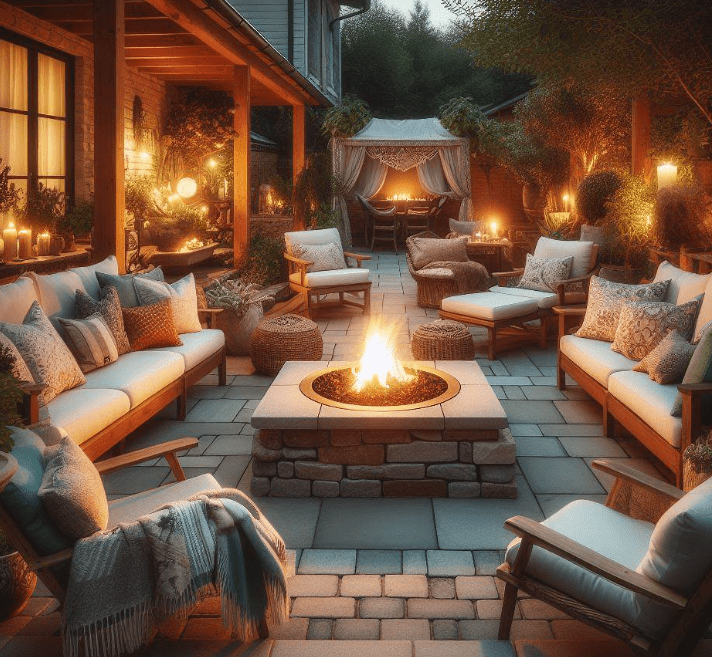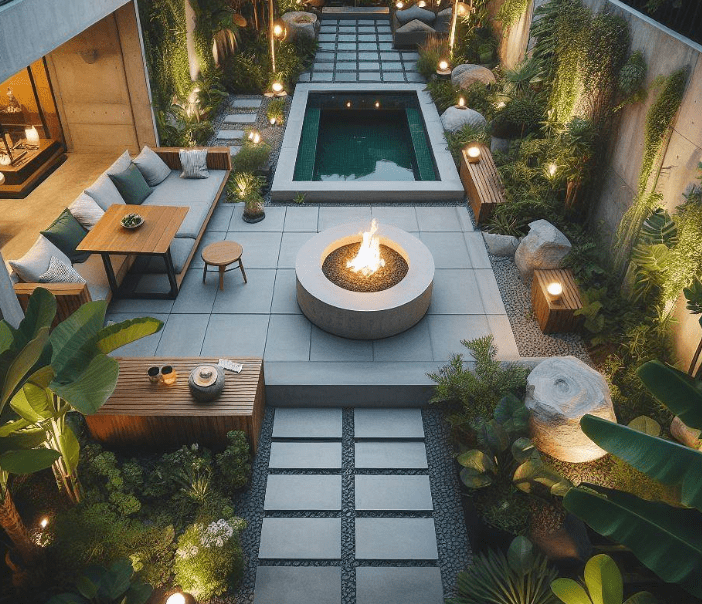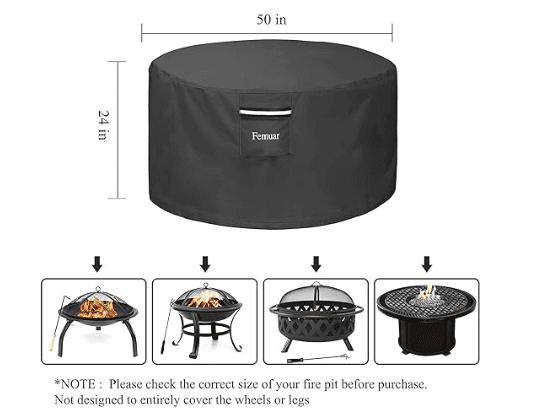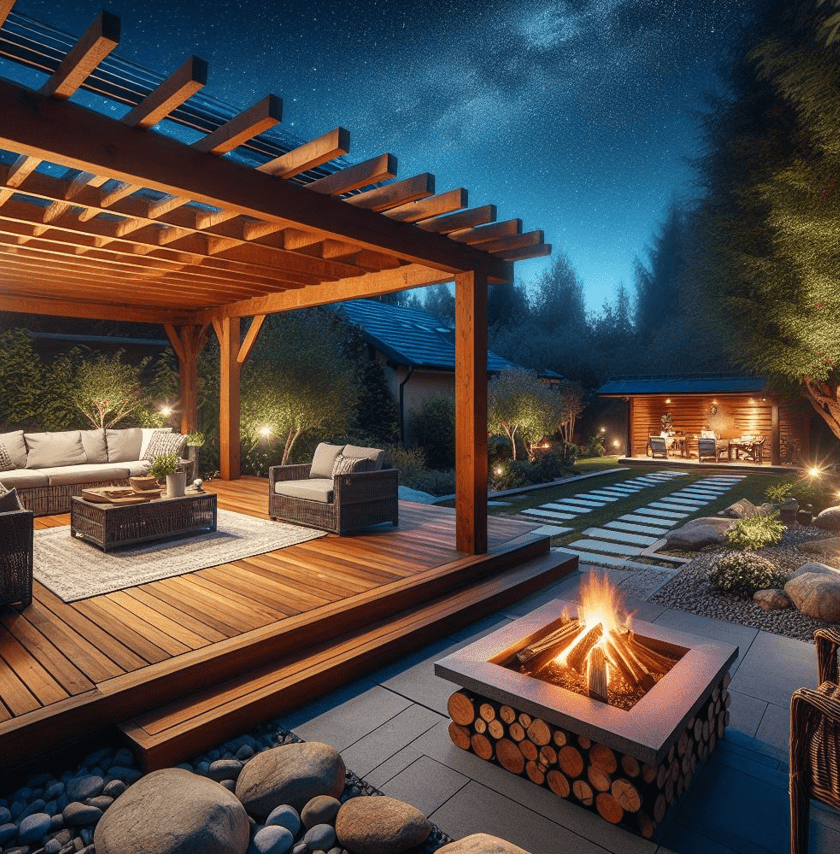
Cozy up beside a crackling fire with our guide to wood burning fire pits. Discover different types, materials, and benefits. Learn to choose the right one for your needs, use it safely, and build your own!
Find the Perfect Fire Pit for Every Occasion
Wood-burning fire pits offer warmth, ambiance, and a gathering place for friends and family. Whether you’re looking for a portable pit for camping or a permanent fixture for your backyard, you will find here something for everyone.
Explore Different Types and Materials
From classic steel fire pits to modern and stylish copper designs, there’s a wood burning fire pit to match your taste and budget. We’ll help you understand the pros and cons of different materials like cast iron, brick, and stone.
The Allure of Different Types
Portable Fire Pits
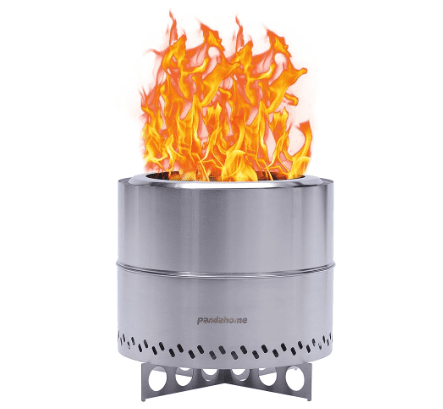
Easy to move, these are ideal for varied outdoor settings. Portable fire pits are a great way to enjoy the outdoors without leaving a trace. They are easy to set up, use, and transport, and they can provide warmth and ambiance for any occasion. Whether you want to roast marshmallows, cook a meal, or relax by the fire, portable fire pits are a versatile and convenient option.
In-Ground Fire Pits
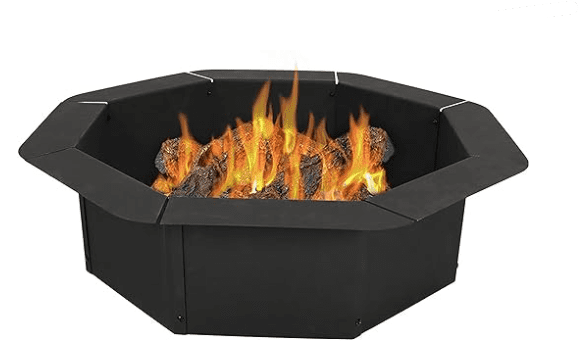
In-ground fire pits are a great way to add warmth and ambiance to your outdoor space. They are easy to install, require minimal maintenance, and can be customized to suit your style and preferences. In-ground fire pits are safer than above-ground ones, as they reduce the risk of fire spreading or escaping.
Built-In Varieties
Customizable and sophisticated, they enhance your outdoor décor. If you want to add warmth and style to your outdoor space, you might want to consider built-in varieties fire pits. These fire pits are permanently installed in your patio, deck, or backyard, and they can use different fuel types, such as wood, gas, or propane.
Built-in varieties of fire pits offer many benefits, such as enhancing the aesthetic appeal of your landscape, creating a cozy and inviting atmosphere, and increasing the value of your property.
However, they also require more planning, installation, and maintenance than portable fire pits, so you should weigh the pros and cons before deciding on one.
Material Matters
Steel Fire Pits
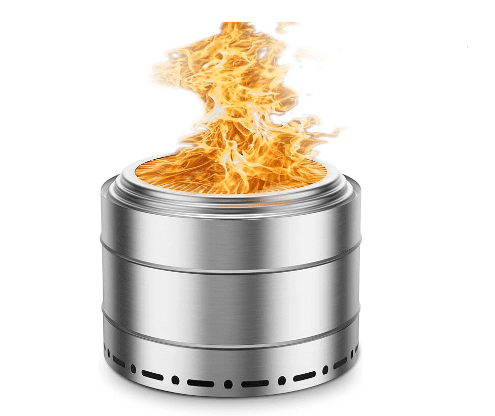
Durable and modern, it is ideal for contemporary settings. Steel fire pits are popular choices for outdoor heating because they have many advantages.
Steel fire pits are intense, durable, light, and easy to work with. They can heat up quickly and emit a lot of warmth but also cool down faster after the fire is out.
They are corrosion-resistant and come in different colors, styles, and finishes. Steel fire pits are also affordable, sustainable, and long-lasting.
Cast Iron Choices
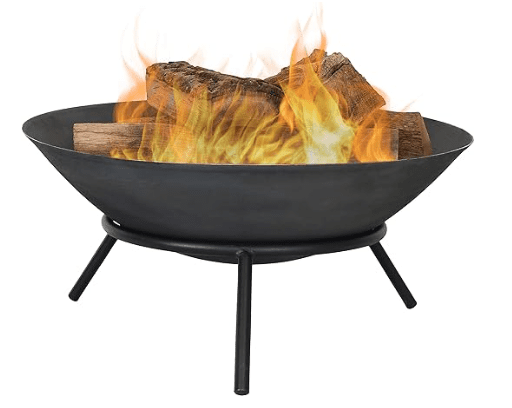
Classic, heavy-duty options known for longevity. Cast iron is a type of metal that is made from iron and carbon. It has some advantages and disadvantages compared to other metals.
Some of the characteristics of cast iron are:
- It is solid and durable but also brittle and prone to cracking.
- It has good resistance to wear and corrosion but also rusts easily if not protected.
- It has high thermal conductivity but expands and contracts with temperature changes.
- It can be shaped into complex forms but requires careful casting and machining.
Depending on the application, different types of cast iron may be chosen.
Some choices are:
- Gray cast iron has a gray color and flaky graphite structure. It is the most widely used type of cast iron, and it is suitable for engine blocks, machine tools, pipes, etc.
- White cast iron has a white color and a hard carbide structure. It is the hardest and most brittle type of cast iron, and it is suitable for abrasive wear parts, such as grinding balls, rolls, etc.
- Ductile cast iron has a black color and a spherical graphite structure. It is the most malleable and challenging type of cast iron, and it is suitable for parts that require high strength and shock resistance, such as crankshafts, gears, etc.
- Malleable cast iron has a yellowish color and tempered graphite structure. It is the most malleable and flexible type of cast iron, and it is suitable for parts that require bending and shaping, such as fittings, brackets, etc.
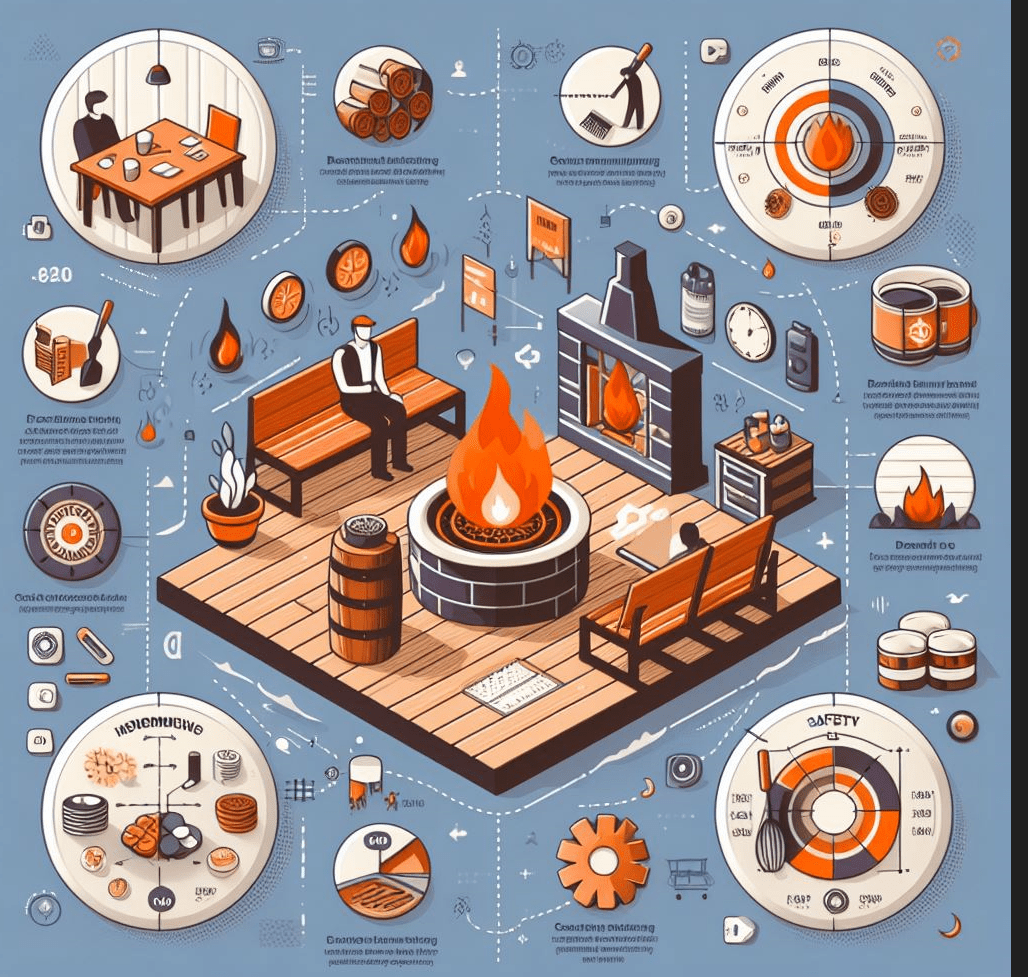
The Elegance of Copper
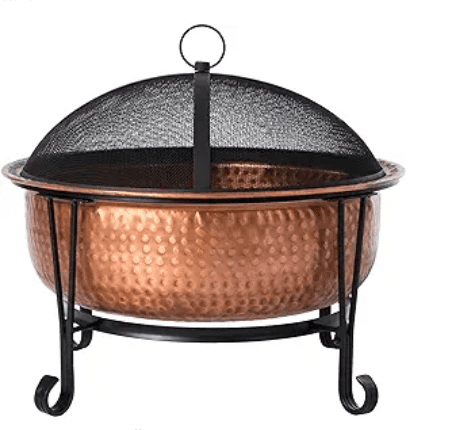
Aesthetic appeal with a natural patina over time. Copper fire pits are a great addition to any outdoor space. They provide warmth, ambiance, and style to your patio, backyard, or garden.
Copper is a durable and corrosion-resistant material that can withstand high temperatures and weather conditions. Copper fire pits come in various shapes, sizes, and designs, so you can find the one that suits your preferences and needs.
Whether you want a traditional round fire pit, a modern rectangular fire pit, or a custom-made fire pit, you can enjoy the benefits of copper fire pits for years to come.
Brick and Stone
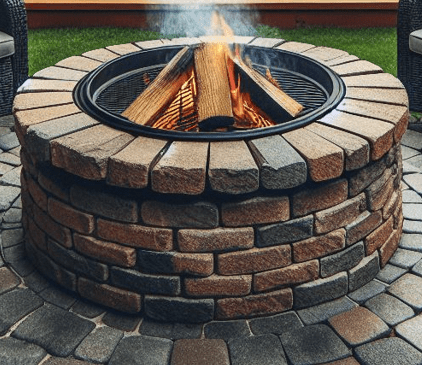
Traditional and sturdy, it blends seamlessly with outdoor landscapes. Brick and stone fire pits are a great way to enhance your outdoor living space. They provide warmth, ambiance, and a focal point for gatherings.
Brick and stone fire pits are also durable, easy to maintain, and customizable to your style and preferences. You can choose from different shapes, sizes, colors, and patterns of bricks and stones to create your unique fire pit.
Safety First: Learn How to Use Your Fire Pit Properly
Fire safety is crucial. Our guide will teach you to select the right firewood, build a safe fire, extinguish it properly, and keep yourself and your surroundings safe.
Fire pits can add warmth and ambiance to your outdoor space but pose risks if not used correctly.
To enjoy your fire pit safely, you should follow these tips:
- Choose a suitable location for your fire pit. It should be 10 feet away from structures, trees, or flammable materials. Avoid placing it on wooden decks, grass, or peat.
- Use the right fuel for your fire pit. Dry, seasoned hardwood is the best choice, as it burns cleanly and efficiently. Avoid softwood, treated wood, paper, cardboard, or trash, as they produce sparks, smoke, and toxic fumes.
- Start your fire slowly and carefully. Use a long match or lighter to ignite some kindling or newspaper in the center of the fire pit. Gradually add small pieces of wood until you have a steady flame. Do not use gasoline, kerosene, or other accelerants to start or boost your fire.
- Keep a safe distance from the fire pit. Do not lean over the fire pit or place any part of your body near the flames. Wear non-flammable clothing and gloves when handling the fire pit or the fuel. Do not leave children or pets unattended near the fire pit.
- Extinguish your fire completely when you are done. Use a metal shovel or poker to spread the embers and ashes in the fire pit. Pour water over the fire pit until there is no more steam or hissing sound. Stir the ashes and water to ensure no hot spots are left. Please dispose of the ashes in a metal container once they are cool.
DIY Enthusiasts Rejoice! Build Your Fire Pit
For the crafty homeowner, we offer step-by-step instructions for building various wood-burning fire pits, from simple to elaborate designs.
If you’re the type of person who enjoys getting your hands dirty and creating something from scratch, then building your fire pit is an excellent project to take on. Not only will you save money by not having to purchase a pre-made fire pit, but you’ll also have the satisfaction of knowing that you built something that will provide warmth and ambiance for you and your family for years to come.
There are many different ways to build a fire pit, so you can choose a design that fits your style and budget.
Some popular options include brick fire pits, stone fire pits, and concrete fire pits.
Brick Fire Pit
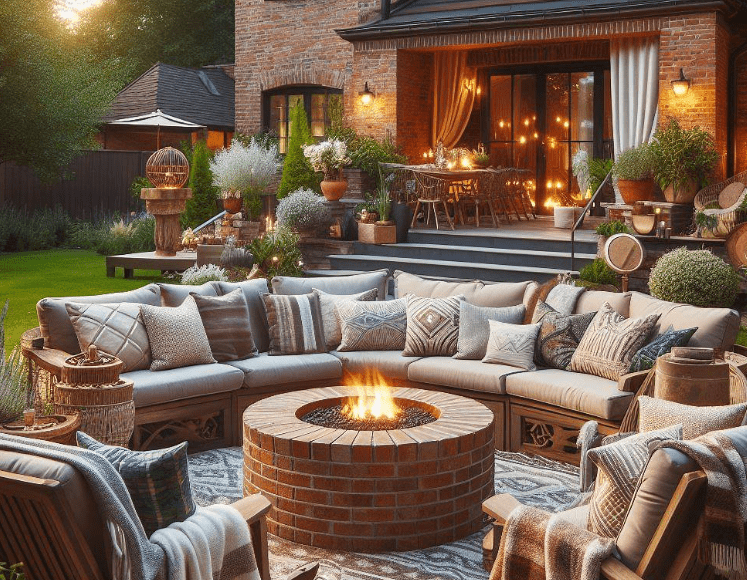
Stone Fire Pit
A stone fire pit is another excellent option, blending seamlessly into your surroundings. To build one, you’ll need to gather stones of varying sizes and shapes and then arrange them in a circular pattern. You may want to use mortar to hold the stones in place.
Concrete Fire Pit
A concrete fire pit is a durable, low-maintenance option perfect for busy homeowners. To build one, you must create a mold for the fire pit and then pour concrete into it. Once the concrete has been set, you can remove the mold and decorate the fire pit as desired.
Regardless of the type of fire pit you choose, follow safety precautions. Always build your fire pit in a safe location away from flammable materials. Never leave a fire unattended, and always extinguish the fire completely before leaving the area.
More Than Just Warmth: Enjoy the Culinary Delights of Your Fire Pit
Transform your fire pit into an outdoor cooking haven. Discover delicious recipes for s’mores, hot dogs, pizzas, and more, perfect for outdoor entertaining.
Let Your Fire Pit Shine with the Right Accessories
Enhance your fire pit experience with various accessories that will transform your backyard into an outdoor haven.
Fire Pit Cover
A fire pit cover is essential for protecting your fire pit from the elements. It will help to prevent rust, corrosion, and fading. It will also keep your fire pit clean and prevent debris from settling in.
A fire pit cover is a significant investment that will extend the life of your fire pit. It is also a must-have for anyone who lives in an area with extreme weather conditions.
Log Rack

A log rack will keep your firewood organized and easily accessible. It will also help to protect your fire pit from sparks and embers. A log rack is a convenient and practical accessory that will make fire-starting a breeze. It is also a great way to add a touch of rustic charm to your backyard.
Fire Starters
Fire starters will help you get your fire going quickly and easily. They come in various forms, including chemical, electric, and natural starters like wood shavings and twigs.
Fire starters are a must-have for anyone who wants to avoid the hassle of using matches or lighters. They are also a great way to reduce the fire risk starting in the wrong place.
Fire Tongs
Fire tongs are essential for safely handling hot coals and logs. They will help you prevent burns and injuries.
Fire tongs are a versatile tool that can rearrange the fire and add more fuel. They are a must-have for anyone who wants to enjoy their fire pit safely and effectively.
Fire Poker
A fire poker is used to stir the fire and rearrange the coals. It can also be used to extinguish the fire completely.
With these accessories, you can create a fire pit experience that is both enjoyable and safe. Your fire pit will become a central gathering place for family and friends and a place to relax and enjoy the outdoors.
Extend the Life of Your Fire Pit with Proper Maintenance
Maintaining your fire pit regularly will help prolong its life and ensure it remains a safe and enjoyable addition to your backyard.
Here are valuable tips for extending the life of your fire pit:
1. Cleaning and Ashes
After each fire, allow the embers to cool entirely before extinguishing the fire. Once the ashes have cooled, remove them from the fire pit and dispose of them according to local regulations. Do not pour water directly into the fire pit; this can damage the material and create a safety hazard.
2. Rust Prevention
If your fire pit is made of steel, it must be protected from rust. After each use, wipe down the fire pit with a damp cloth to remove any soot or ash. You can also apply a rust-resistant sealant or paint to the fire pit to protect it from the elements.
3. Combustion Chamber Cleaning
If your fire pit has a combustion chamber, cleaning it periodically to remove any ash, debris, or creosote buildup is essential. Creosote is a flammable substance that can build up in the combustion chamber and increase the fire risk. Clean the combustion chamber with a wire brush or vacuum cleaner.
4. Surface Protection
If your fire pit is made of a material susceptible to scratches or fading, you can apply a protective coating. This will help preserve your fire pit’s appearance and extend its life.
5. Structural Integrity
Regularly inspect your fire pit for any signs of damage, such as cracks or loose pieces. If you notice any damage, repair it promptly to prevent further deterioration.
6. Seasonal Storage
If you live in an area with extreme weather conditions, storing your fire pit indoors during the off-season is a good idea. This will help protect it from the elements and prevent damage.
7. Professional Cleaning
If your fire pit is heavily soiled or you are uncomfortable cleaning it yourself, you can hire a professional cleaning service. They will be able to clean your fire pit deep and remove any stubborn stains or debris.
If you follow these tips, you can help extend the life of your fire pit and maintain its beauty and functionality for years to come.
Troubleshooting: Solve Common Fire Pit Problems with Ease
Don’t let a smoky fire or cold flames dampen your spirits. Our troubleshooting guide will help you fix common issues and get your fire pit back in top shape.
Here are a few of the leading issues with a fire pit and their solution:
Smokey Fire
A smoky fire is usually caused by damp wood or a lack of airflow. To fix a smoky fire, use drier wood and ensure proper airflow. You can also try using a chimney starter to help draw the smoke up and out of the fire pit.
Cold Flames
Cold flames are usually caused by a lack of oxygen or wet or green wood use. To fix cold flames, try using drier wood and ensuring proper airflow. You can also try using a blower to help oxygenate the fire.
Sparks and Embers
Sparks and embers can be a safety hazard, especially if they land on flammable material. Try using a fire pit screen or cover to prevent sparks and embers. You can also try using a fire pit made of a material that is less likely to produce sparks.
Fire Pit Not Getting Enough Heat
If your fire pit is not getting enough heat, it could be because the fire is not burning hot enough. To fix this, try using larger wood pieces or a blower to help the fire burn hotter.
Fire Pit Too Hot
If your fire pit is too hot, it could be because it is burning too intensely. To fix this, try using smaller pieces of wood or adding water to the fire pit. You can also try using a fire extinguisher to extinguish the fire completely.
Fire Pit Cracking or Crackling
If your fire pit is cracking or crackling, it could be because the material is not properly seasoned or the wood is damp. To fix this, try using a fire pit made of a material that is less likely to crack or crackle, such as cast iron or brick.
Fire Pit Getting Rusty
If your fire pit is getting rusty, it could be because it is not adequately protected from the elements. Use a rust-resistant sealant or paint on the fire pit to fix this. You can also try storing the fire pit indoors when not in use.
Fire Pit Not Getting Enough Airflow
If your fire pit is not getting enough airflow, it could be because it is too small or the fuel is not arranged correctly. To fix this, try using a larger fire pit or arranging the fuel to allow for better airflow.
Following these tips can help troubleshoot common fire pit problems and keep your fire pit safe and enjoyable.
Conclusion
With proper safety precautions and maintenance, your wood-burning fire pit can provide years of warm, inviting ambiance. Whether you’re gathered around the fire pit with loved ones or enjoying a meal cooked over the open flames, you’ll create lasting memories that will warm your heart long after the flames have died out.
So, embrace the simple pleasure of a wood-burning fire pit and create a cozy and charming space for your family and friends to gather.
Last update on 2024-11-21 / Affiliate links / Images from Amazon Product Advertising API






















